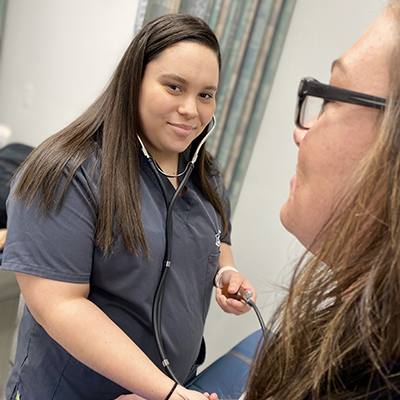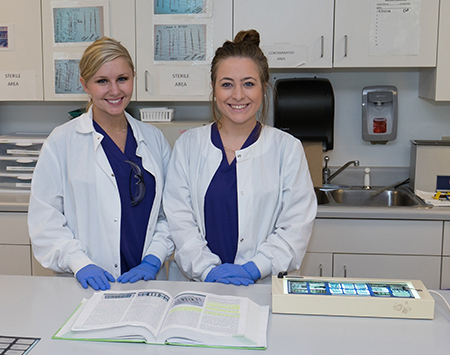As the aging population grows, the demand for preventive medical care increases as well. This means that physicians are in need of medical assistants to help out with clinical and administrative duties in their offices to serve the growing number of patients. If you are interested in pursuing a medical assisting career, this article will help you learn the steps of how to become a medical assistant.
Medical Assistant Requirements
There are several paths to becoming a medical assistant. Although some enter the profession with just a high school diploma and then train on the job, the majority of medical assistants enroll in a post-secondary medical assistant training program and/or become a certified medical assistant.In any case, a high school diploma or equivalent is usually the minimum educational requirement. High school students who wish to become medical assistants may want to take classes in biology, chemistry, and anatomy. It can also be helpful to enroll in courses about business and computer science.
Post-Secondary Training
Medical Assistant Qualities
Medical assistants generally work in physician’s offices and are part of a larger team. They interact with many different people throughout their workday, and often act as a liaison between physician and patient. A medical assistant’s duties consist of clinical tasks like drawing blood, taking vital signs, or performing lab tests as well as administrative responsibilities, such as scheduling appointments, filling out insurance forms, or greeting patients. Therefore, medical assistants need to bring a variety of qualities to the job, including:
- Interpersonal skills
- Detail orientation
- Social perceptiveness
- Time management
- Service orientation
- Near vision
- Finger dexterity
Medical Assistant Certifications
According to the National Commission for Certifying Agencies, the following medical assistant certifications are accredited:
- Certified Medical Assistant (CMA) from the American Association of Medical Assistants
- Registered Medical Assistant (RMA) from American Medical Technologist
- National Certified Medical Assistant (NCMA) from the National Center for Competency Testing
- Certified Clinical Medical Assistant (CCMA) from the National Healthcareer Association
- Certified Medical Administrative Assistant (CMAA) from the National Healthcareer Association
What Do You Learn as a Medical Assistant Student?
- Introduction to Medical Assisting
- Body Organization with Billing & Coding
- Body System & Testing with Office Management
- Phlebotomy & Injections with Communications
- Body Systems with Life Span Care & Ethics
- Externship Review Class & Externship
Where to Study Medical Assisting
The most common educational routes to becoming a medical assistant are vocational school, community college or university, and on-the-job training. The difference between these options largely lies in their length, content, and degree type. Let’s take a closer look:
Vocational School
- Consists primarily of medical assisting courses.
- Curriculum includes courses on both clinical and administrative medical assistant duties, with classroom and laboratory portions.
- Can be completed in less than a year.
- Students graduate with a diploma.
Community College or University
- Includes general education classes (GE).
- Curriculum includes courses on both clinical and administrative medical assistant duties, with classroom and laboratory portions, as well as GE classes like English or Math.
- Usually takes two years or longer (for an associate’s degree), or may in some cases be completed in less time (for a certificate program).
- Students graduate with a diploma or associate’s degree.
On-The-Job Training
- Student trains under a physician and/or experienced medical assistant.
- Student learns about medical terminology, names of instruments, typical daily tasks, interacting with patients, and coding electronic health records (EHRs).
- Time may vary, depending on facility.
- No official diploma or degree.
Becoming a Medical Assistant
SOURCES
- https://www.bls.gov/ooh/healthcare/medical-assistants.htm#tab-6
https://www.bls.gov/ooh/Healthcare/Medical-assistants.htm#tab-4
http://www.aama-ntl.org/medical-assisting/what-is-a-medical-assistant#.WpyK1ZPwYfF
https://www.onetonline.org/link/summary/31-9092.00



